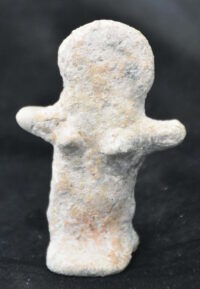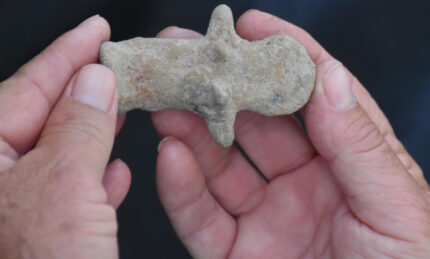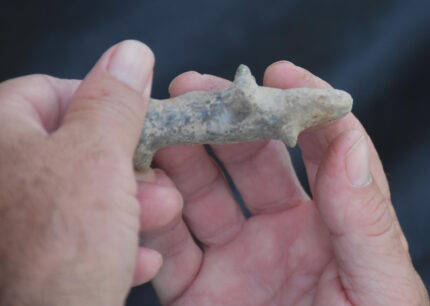
The Yeşilova Mound is the oldest prehistoric settlement in İzmir dating back to 6,500 B.C. Its discovery in 2003 redefined the chronology of human settlement in the İzmir area, pushing it back thousands of years from what was previously thought to be its origins in the 3rd millennium B.C. The mound has been excavated since 2005, revealing four main settlement layers: from the oldest Neolithic level to the Late Roman period. The remains of copious seafood — particularly mussels shells — point to the residents having subsisted largely on the fruits of the nearby Aegean coast.
The female figurine dates to the Bronze Age layer of occupation. The architectural remains from this period are significantly more elaborate. Rectangular structures, believed to be long houses, were built with high stone walls. These structures were heavily damaged in an earthquake 5,000 years ago and were later rebuilt in the next phase of occupation.
The style of the fertility goddess, her gathered hair and outstretched arms, connects the Yeşilova Mound settlement and therefore prehistoric İzmir to other Aegean cultures.
Ege University Faculty of Letters Department of Archeology Lecturer and Head of Excavation Assoc. Dr. Zafer Derin said, “It is important that this artifact was found in a 5,000-year-old settlement. More importantly, similar ones are found in Lesbos.” Island. There are similar ones in the city of Thermi in Lesbos, one of the Aegean islands. There are even more similar ones here. However, the artifact we found belongs to the period 500 years before the ones in Lesbos. This artifact is a cultural interaction between the North Aegean Islands and even the Balkans. “It shows that it is true,” he said.
* This article was originally published here










No comments:
Post a Comment